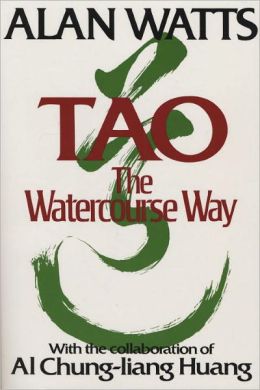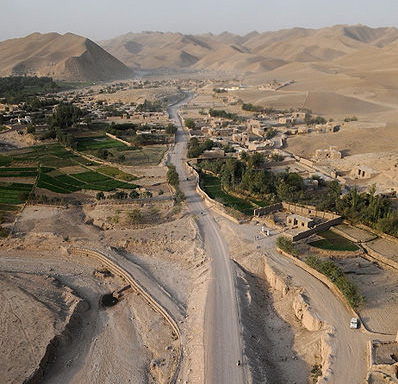Baal (Japan)
Tao: The Watercourse Way By Alan Watts
When I went off to college the first time, I didn't find my degree but I did find this incredible book. This was the first time I had encountered any work by Alan Watts and it was in the eastern religion section. My mother is a Buddhist yet this was my first exposure to Taoism.
My preferred translation by D.C. Lau
Unfortunately, it is very difficult to ascertain the exact introduction I had to Bruce Lee's philosophy, but it was definitely this title that revealed details of his sentiment and ultimately his art of physical expression: Jun Fan Jeet Kune Do.
Fort Benning, Georgia: In the training environment we had amnesty boxes. A container for the anonymous abandonment of contraband. While passing it, the cover of a book caught my eye. I wedged my fingers into it and salvaged a copy of Tao of Jeet Kune Do.
A week later I was doing kitchen duty because I didn't go to the Judeo-Christian services provided by the Chaplain. All that kept running through my head was the lack of opportunity to shove my head into something deeper than the subjects of pussy,killing, and food. So a request was made to see the Chaplain.
He provided me with his time and decided he would arrange for me to solicit a Buddhist/Pagan/ and other denomination communion at a gazebo on base. We could use whatever religious articles we could find. This book and one other provided some well needed guidance:
Maternal influence pushed Buddhism and altruistic philosophy hard upon me. It was only natural that one would pursue a philosophical outlet to bridge the gap in my upbringing and and my revulsion to it. Let us continue to follow the catalyst:
 |
| Zen: The Way of the Sword by Winston L. King |
From the Chinese Chan we move toward the Japanese Zen and find the Samurai a fitting ethos for any Warrior period. Winston King provides a detailed portrait of the methodology and integration of warrior and monk technology.
A Philosophy build by Thanatos. Both Mental and Physical subjugation. Notice the emotions are not mentioned. That is because they have become accustomed to a physiological discipline that is tailored to meet the demands of the warrior. Breath control is a vital key.
 |
| Adrenaline |
I studied briefly with a Taiwanese Upasika before I had served in the forces. She would make me practice sitting and walking meditation. Begininning with the old tradition of breath counting. Strange enough, she had offered me a different course in my life: the opportunity to possibly spend time in Taiwan studying Chan at a monastery. Within six months, the pressures of a family made me choose me differently and led me to my military monastic life.
 |
| Upasika Wang, before her ordination. Sitting center. |
I found Bhikkhuni Wang while driving on I-45 in South Houston. There is a hotel with a strange asian management office in front. In front of the hotel, she has a secondary sign for Texas Zen Bodhi Society. I decided to recon this mofo.
I went inside and the staff seemed very confused by my questions until I pointed out the sign. Then they said, "Oh, you mean Mrs. Wang...One second..." And off they went and returned with a petite Taiwanese woman who approached me with hands together. Her head bowed. She said: "Amituofo".
She immediately led me to the inside of the hotel and showed me her meditation room. She didn't tie me up or anything. She made me sit in silence or walk in silence while she counted cadence with her wooden fish and barked at me. She was laconic always. I admired her tenacity and seriousness. It was surprising when she introduced me to her family, and I was able to see her as "Mom". Later, she took me to a very nice temple in Houston. Not as nice as the hotel where she made me walk in laps to the rhythm of her drum while her tenants watched with confusion. Amituofo Wang!
Lest I digress further...
A fundamental component of marksmanship is breath control. Learning the rhythm of your breath. Taking a shot while your chest is expanding with inhalation can elevate your barrel by a fraction of an inch. Amplify that by a 500 meter distance and you might be more than a foot off your target. Learning how to engage appropriate breathing rhythms became more familiar in my life.
Shooting and exercise became my Zen. Then Zen was breathing. While at rest the Crowley eight breath method. When I ran: two short inhalations through the nose and one through the mouth.
 |
| I was so pissed when I was 16 and got this book. This has nothing to do with "invocations". Wrong. |
Then the counting stopped one day. No "one" was counting. It was in Afghanistan when this happened for me.
The mind always returns. Like a child demanding attention and order. When the threshold is broken, however, the leash and master can engage. Despite becoming out of touch and clumsy, the nuerocircuitry will remain effective. That is my hypothesis at this time. Dementia may prove otherwise.
I return to my breath-work and Taoist duality daily. It is a proclivity of this human condition so I prefer to think of the various methods as tools for governing this apparatus that is claiming
"cogito ergo sum."
Operant conditioning is prevalent throughout all institutions and the military is no exception.
 |
| Oxytocin |
Breath control in particular does have an effect on oxytocin. Which like the other hormone epinephrine wreaks terrible havoc on the central nervous system. I have been working with my own situations for years now with some definite measure of progress.
At this point a breathing regimen is amongst my various practices. I often forget how grounded in my mind my physical practices can be. Even more common is how I forget the source of some of these Dharma treasures.









No comments:
Post a Comment